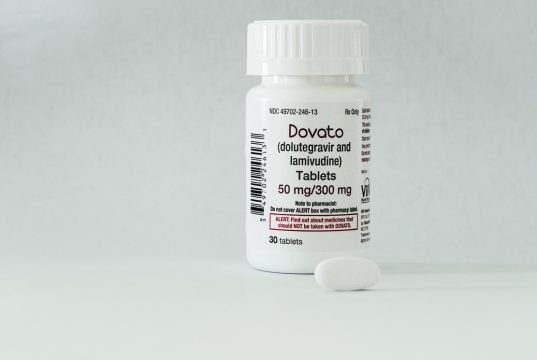Advertisment
UEGW 2018: Debate: Treat to target and tight monitoring in IBD

Dr Filip Baert (Belgium) discusses the debate at UEGW on treating to target and tight monitoring in IBD.
Interviews by Hannah Chatfield. Written by Maria Dalby
An educational session on precision medicine in IBD at UEG Week 2018 featured a debate between two leading experts on whether a treat-to-target approach with tight monitoring is justified in IBD or not. Dr Filip Baert from Belgium argued for the motion; his opponent was Professor Iris Dotan from Israel.
Pro:
The principal rationale for adopting a treat-to-target approach in IBD was the realisation in the SONIC study that there is a disconnect between the clinical symptoms of IBD – in this case CD – and evidence of active inflammation in the mucosa.1 In the last decades therapeutic monitoring of IBD has evolved from CDAI and CRP levels to targets such as endoscopic scores, faecal calprotectin levels and cross-sectional imaging using MRI which are associated with mucosal healing and deep remission and reflect an actual change of the disease course.2 The IBSEN study showed that patients who achieved mucosal healing were at significantly lower risk of needing surgery compared with those who did not;3 data from Dr Baert’s own centre shows that mucosal healing is predictive of sustained clinical remission for up to four years with no need for steroids and no flares in newly diagnosed CD patients.4 Endoscopic remission is included as a key target in CD in the STRIDE recommendations.5 In terms of monitoring, the CALM study demonstrated that an algorithm for tight monitoring of clinical symptoms and biomarkers including faecal calprotectin and CRP and timely escalation of therapy with a biological agent achieved a significantly higher rate of deep remission and better clinical and endoscopic outcomes compared with merely monitoring symptoms.6 Importantly, tight monitoring also resulted in a greater improvement in IBD-related quality of life compared with controls which indicates that this approach is preferable from a patient perspective as well.7 Although tight monitoring is associated with higher costs upfront, the increased remission rate and decreased rate of CD-related hospitalisation render the approach cost-effective compared with symptom monitoring only, with an incremental cost-effectiveness ratio (ICER) of £20,913 per quality-adjusted life year (QALY).8 A relatively simple treat-to-target algorithm involves performing a baseline assessment of the newly-diagnosed patient and agreeing therapeutic targets based on risk factors for progression and long-term complications.9 If the targets are not reached within a predefined time frame, the patient is reassessed and therapy escalated as needed; once the targets have been reached the surveillance should continue to ensure the treatment remains optimised to prevent long-term bowel damage and disability.
Con:
Although Professor Dotan agreed with Dr Baert that a treat-to-target approach with tight monitoring is likely to improve outcomes and that it helps to objectify disease management and control intestinal inflammation, gaps remain in the available evidence as to which targets should actually be used – there is as yet no consensus on the role of biomarkers such as CRP and faecal calprotectin as therapeutic targets compared with mucosal and histological healing or drug trough levels. In the development of the STRIDE recommendations, biomarker remission as defined by normal CRP and faecal calprotectin levels was considered an adjunctive target. A study performed at Professor Dotan’s centre correlated video capsule endoscopy with MRE findings and found that patients in clinical and biomarker remission still had significant mucosal inflammation with Lewis scores over 135; a small proportion of patients (4.8%) hade Lewis scores over 790 indicating moderate to severe inflammation.10 However, Professor Dotan pointed out that the Lewis score has a positive predictive value of only 56% for flares and for this reason, escalating therapy based on these findings could potentially expose the patient to unnecessary treatment and risk. When considering tight monitoring it is important to bear in mind that a number of secondary endpoints related to mucosal healing and endoscopic remission in the CALM study did not show any significant difference.6 Likewise in the REACT study, no difference was seen between early combined immunosuppression and conventional management of CD on outcomes such as surgery or hospitalisation; only when considering a combined outcome of surgery, hospitalisation and serious disease-related complications could a clear separation be seen between the two approaches.11 A recent systematic review and meta-analysis showed no association between therapeutic drug monitoring and clinical remission rates.12 Professor Dotan also stressed that in addition to the high upfront cost of tight monitoring, an additional barrier to its use in routine practice is the highly complex algorithms used in CALM, REACT and other studies which are unlikely to be practicable for daily use.
References
- Peyrin-Biroulet L, Reinisch W, Colombel JF, et al. Clinical disease activity, C-reactive protein normalisation and mucosal healing in Crohn’s disease in the SONIC trial. Gut 2014;63:88-95.
- Allen PB, Peyrin-Biroulet L. Moving towards disease modification in inflammatory bowel disease therapy. Curr Opin Gastroenterol 2013;29:397-404.
- Froslie KF, Jahnsen J, Moum BA, et al. Mucosal healing in inflammatory bowel disease: results from a Norwegian population-based cohort. Gastroenterology 2007;133:412-22.
- Baert F, Moortgat L, Van Assche G, et al. Mucosal healing predicts sustained clinical remission in patients with early-stage Crohn’s disease. Gastroenterology 2010;138:463-8; quiz e10-1.
- Peyrin-Biroulet L, Sandborn W, Sands BE, et al. Selecting Therapeutic Targets in Inflammatory Bowel Disease (STRIDE): Determining Therapeutic Goals for Treat-to-Target. Am J Gastroenterol 2015;110:1324-38.
- Colombel JF, Panaccione R, Bossuyt P, et al. Effect of tight control management on Crohn’s disease (CALM): a multicentre, randomised, controlled phase 3 trial. Lancet 2018;390:2779-2789.
- Panaccione R, Colombel JF, Bossuyt P, et al. DOP071 Tight control with adalimumab-based treatment is associated with improved quality of life outcomes in patients with moderate to severely active Crohn’s disease: data from CALM. Journal of Crohn’s and Colitis 2018;12:S078-S079.
- Panaccione R, Colombel JF, Bossuyt P, et al. OP017 TREAT TO TARGET FOR CROHN’S DISEASE WITH ADALIMUMAB TREATMENT IS COST EFFECTIVE OVER 48 WEEKS: AN ECONOMIC ASSESSMENT OF THE CALM TRIAL. United European Gastroenterology Journal 2017;5:A8.
- Bouguen G, Levesque BG, Pola S, et al. Endoscopic assessment and treating to target increase the likelihood of mucosal healing in patients with Crohn’s disease. Clin Gastroenterol Hepatol 2014;12:978-85.
- Ben-Horin S, Lahat A, Amitai MM, et al. P392 Comprehensive video capsule endoscopy-based monitoring predicts short and long-term risk of disease flares in small bowel Crohn’s disease: A prospective cohort study. Journal of Crohn’s and Colitis 2018;12:S302-S303.
- Khanna R, Bressler B, Levesque BG, et al. Early combined immunosuppression for the management of Crohn’s disease (REACT): a cluster randomised controlled trial. Lancet 2015;386:1825-34.
- Ricciuto A, Dhaliwal J, Walters TD, et al. Clinical outcomes with therapeutic drug monitoring in inflammatory bowel disease: A systematic review with meta-analysis. J Crohns Colitis 2018.





